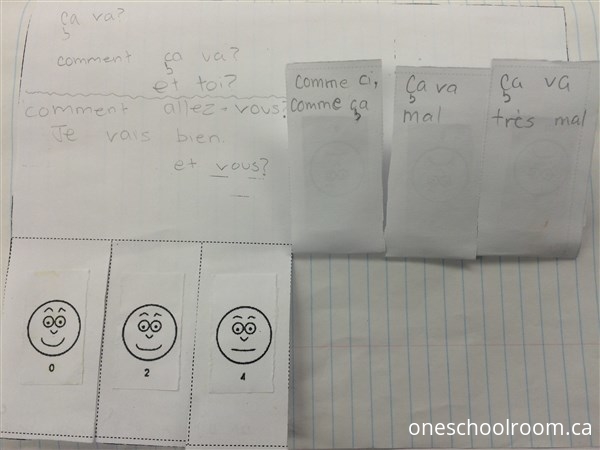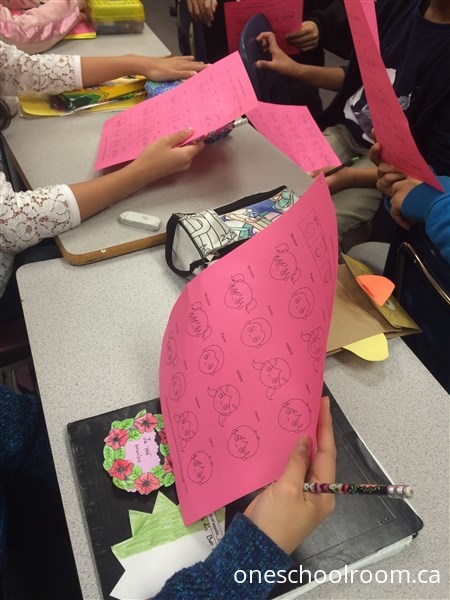(Updated September 2022)
Objectives:
Students will be able to ask people how they are feeling and tell people how they are feeling:
Ça va? Comment ça va? Et toi?
Ça va très bien. Ça va bien. Ça va. Comme ci, comme ça. Ça va mal. Ça va très mal.
For Teachers
- Ça va game
- PowerPoint (It’s free but you have to register)
- Ça va game worksheet
- Comment ça va Foldable
- My 2022 Unit 1 / Lesson (it fits into a whole unit – www.oneschoolroom.ca/online_lessons) This is the one when teaching Club Mystère
- My 2021 Unit 1 / Lesson 4 (it fits into a whole unit – www.oneschoolroom.ca/online_lessons)
- My 2020 Unit 1 / Lesson 3 (it fits into a whole unit – www.oneschoolroom.ca/online_lessons

Lesson
This Comment ça va? French lesson was a lot of fun as the students were very engaged which is always so rewarding.
Again depending on the students’ experience and energy, sometimes I start this lesson by playing the Ça Va? game and sometimes by making a Ça Va? Foldable.
1. Ça Va? Game
Each student is given a Ça va game worksheet. We talked about each expression and the students draw a face with that expression in each box. We also practice pronouncing the different French names on the worksheet.
(I find I have to point out we are looking at the eyes and nose of the faces. They have to draw the mouths).
Then stand up and perform each emotion with great energy.
After we are full of energy, I write this dialogue on the board:
P1: Bonjour!
P2: Bonjour!
P1: Comment t’appelles-tu?
P2: Je m’appelle ________.
P1: Comment ça va?
P2: __________________.
Then the students take turns, checking if their partner drew the correct face, on the correct person, after they finish the dialogue three times.
2. Ça Va? Foldable
Many years ago, I was introduced to the idea of Foldables at a conference. I bought Diane Zikes’ book Notebook Foldables for Spirals, Binders, & Composition Books and it is now one of the tools in my “teacher toolbox.”
As you can see in the photos, we cut the Comment ca va Foldable so there are flaps. Then the students glue six faces down in order. Onced glued, they write the different responses: Ça va très bien. Ça va bien. Ça va. Comme ci, comme ça. Ça va mal. Ça va très mal.
Then the students wrote the question “Ça Va?, Comment ça va?” and “et toi?” on their paper. The grade sevens also added “Comment allez-vous?, Je vais bien” and “et vous?”.

